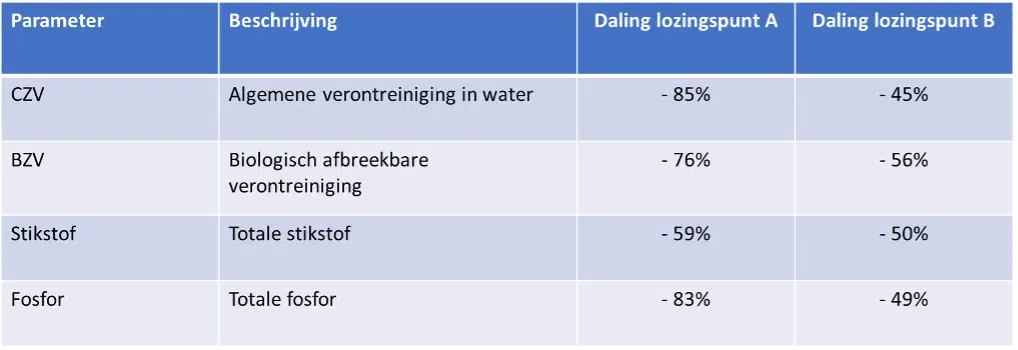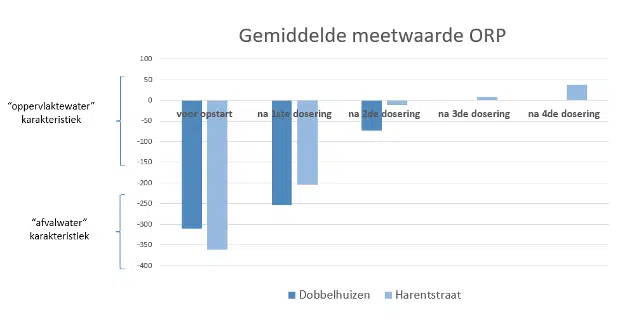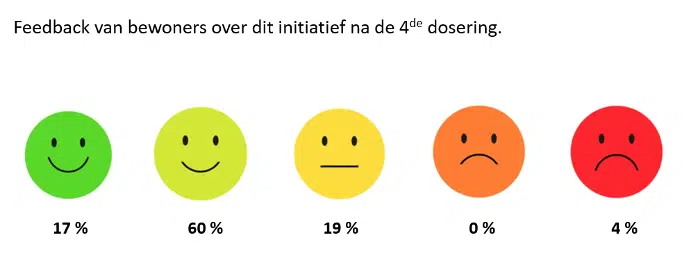Liquisens and Biologeco, as part of a pilot project commissioned by Pidpa and the municipality of Bonheiden in 2021, built knowledge around the application of a “nature-based,” decentralized solution to reduce the negative impact of the discharge of untreated residential wastewater.
Context
The European Water Framework Directive must ensure the quality of our surface water by 2027. Households are the largest source of net phosphorus emissions to surface water and, after agriculture, a major source of net emissions of nitrogen to surface water.
The Flemish government, local governments and water companies are making great efforts to increase the treatment rate of domestic wastewater (85% by 2020) in Flanders. This may not be enough to achieve good surface water quality by 2027.
At the end of 2020, 400,000 homes in Flanders were still not connected to a sewerage network. Understanding among these residents of the lack of a sewerage network is low, especially in locations where odor nuisances are regularly detected or wastewater is discharged into valuable nature.
In cooperation with the water company Pidpa and the municipality of Bonheiden, a pilot project was initiated to greatly reduce the negative impact of direct discharge of untreated wastewater, pending the construction of sewers as a structural solution.
Source-oriented approach
Liquisens and Biologeco have developed a solution based on the dosing of microorganisms. Using microorganisms to treat domestic wastewater is a classic approach.
Three elements distinguish the approach of Liquisens and Biologeco from classical approaches:
Through activated microorganisms, septic tanks are treated to restart their functioning to improve and to optimize in such a way that there are multiple results :
- The septic tanks are working better again.
- The infiltration wells that come after the septic tanks will eventually become effective again as the fats are slowly digested and infiltration can happen again, which is better for the groundwater.
- The overflow into streams and canals from the septic tanks is done with purer water. The good microorganisms continue their action in streams and canals, where sludge and wastewater are also further purified.
- Through activated microorganisms, septic tanks are treated to restart their functioning to improve and to optimize in such a way that there are multiple results :
- The septic tanks are working better again.
- The infiltration wells that come after the septic tanks will eventually become effective again as the fats are slowly digested and infiltration can happen again, which is better for the groundwater.
- The overflow into streams and canals from the septic tanks is done with purer water. The good microorganisms continue their action in streams and canals, where sludge and wastewater are also further purified.
The activated microorganisms were dosed through the toilets into the septic tanks. This choice made it possible to engage with residents and inform them of what initiatives they could take to also contribute to a better outcome.
Communication during the pilot project was always conducted between the municipality of Bonheiden and the water company Pidpa.
Bonheiden pilot project : the location
In 2020, in cooperation with Pidpa in the municipality of Bonheiden, a neighborhood of about 60 houses was selected whose wastewater was diverted to 2 points via streams and canals and could thus be easily monitored via online measurements. A closed system, as it were, for minimal external influence.
In the design of the pilot project, 4 doses are foreseen in the septic tanks and 3 in the surrounding streams and canals. Because of the lower temperatures in winter, it makes no sense to dose into streams and canals because the action of the microorganisms is not initiated at such low temperatures.
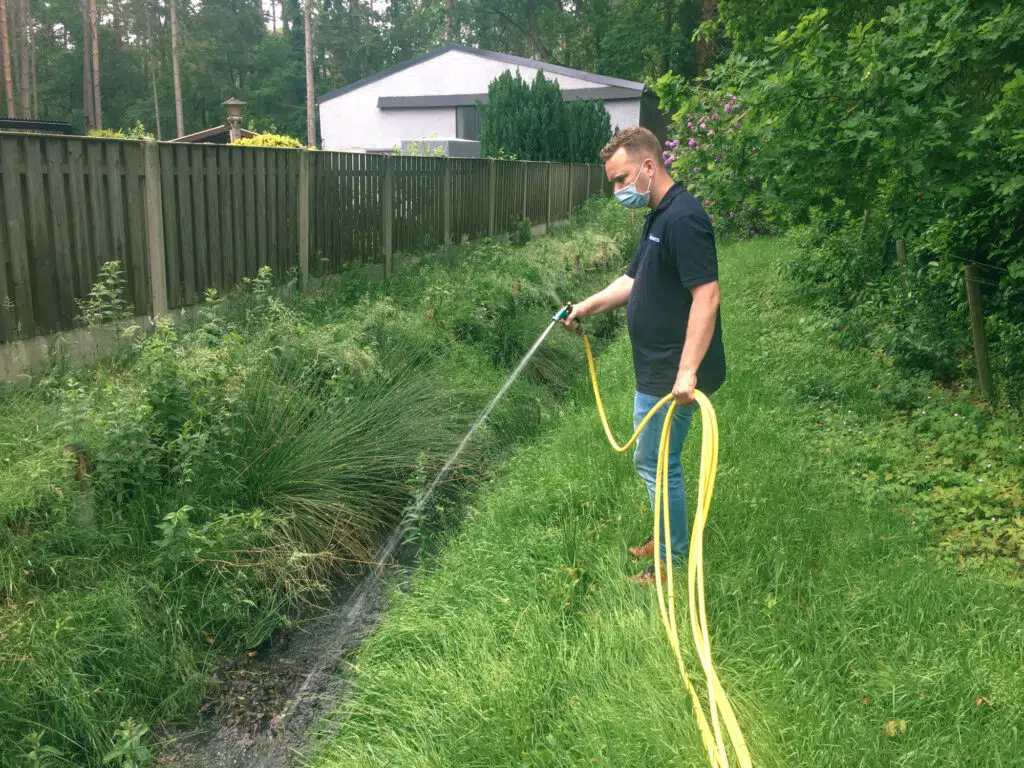
Results
Biweekly samples were taken by an accredited laboratory at the two discharge points. The dependence of the measurement results on precipitation periods was corrected by estimating the water level in the canals at the time of sampling.
The table below shows the results for both discharge points. A significant decrease in nutrients was observed.
In addition, an online measurement of ORP (oxido-reduction potential) was performed. ORP can be considered an indicator of biochemical reactions in water (ORP Management in Wastewater as an Indicator of Process Efficiency – YSI environmental – 2008). These results also show a clear improvement in water quality at both discharge points.
A strong decrease in odor nuisance was observed at the Dobbelhuizen discharge point. No measurements were taken to objectify these findings.
A marked visual improvement in water quality was also noted.
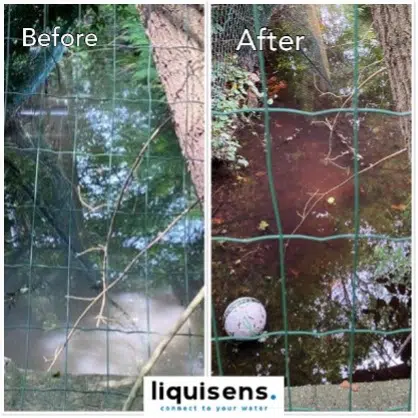
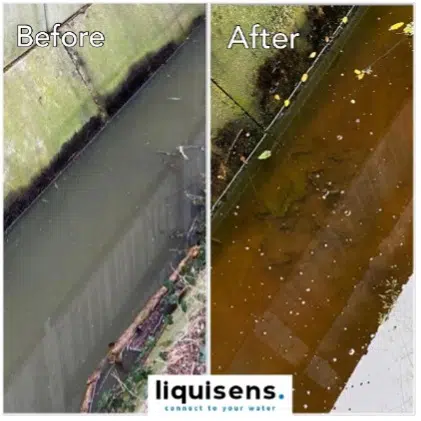

Finally, residents were surveyed about how they perceived this initiative. Most residents were decidedly positive or positive that the local government is taking (took?) initiative in anticipation of a structural solution.
Preconditions that affect the outcome
- Dilution due to intense precipitation – correction based on water level
- Autumn: possible impact of falling leaves on measurement results
- Time of dosing canals: influence of rainfall on effectiveness of dosing – too rapid discharge
- Biological processes run better at higher temperatures.
Decision
The dosage of activated microorganisms has a demonstrable positive impact:
- Very strong decrease in odor nuisance,
- Visual improvement of water quality,
- Significant decrease in N and P,
- Positive feedback from local residents.
Based on the results obtained, 4 doses per year seem necessary. A decrease in efficiency was observed after about three months.
It is insufficient to merely apply activated microorganisms to local canals and streams for long-term impact. Dosing in septic tanks is critical.
Residents are very willing and most residents are very supportive of this initiative (pending a structural solution). On average, we were able to go into more than 90% of the homes for any dosage. An initial awareness campaign is recommended.
Optimization of logistics can lead to significant cost optimization, making this application at least worth considering for zones with periodic complaints or zones where domestic wastewater is discharged into valuable natural areas.

